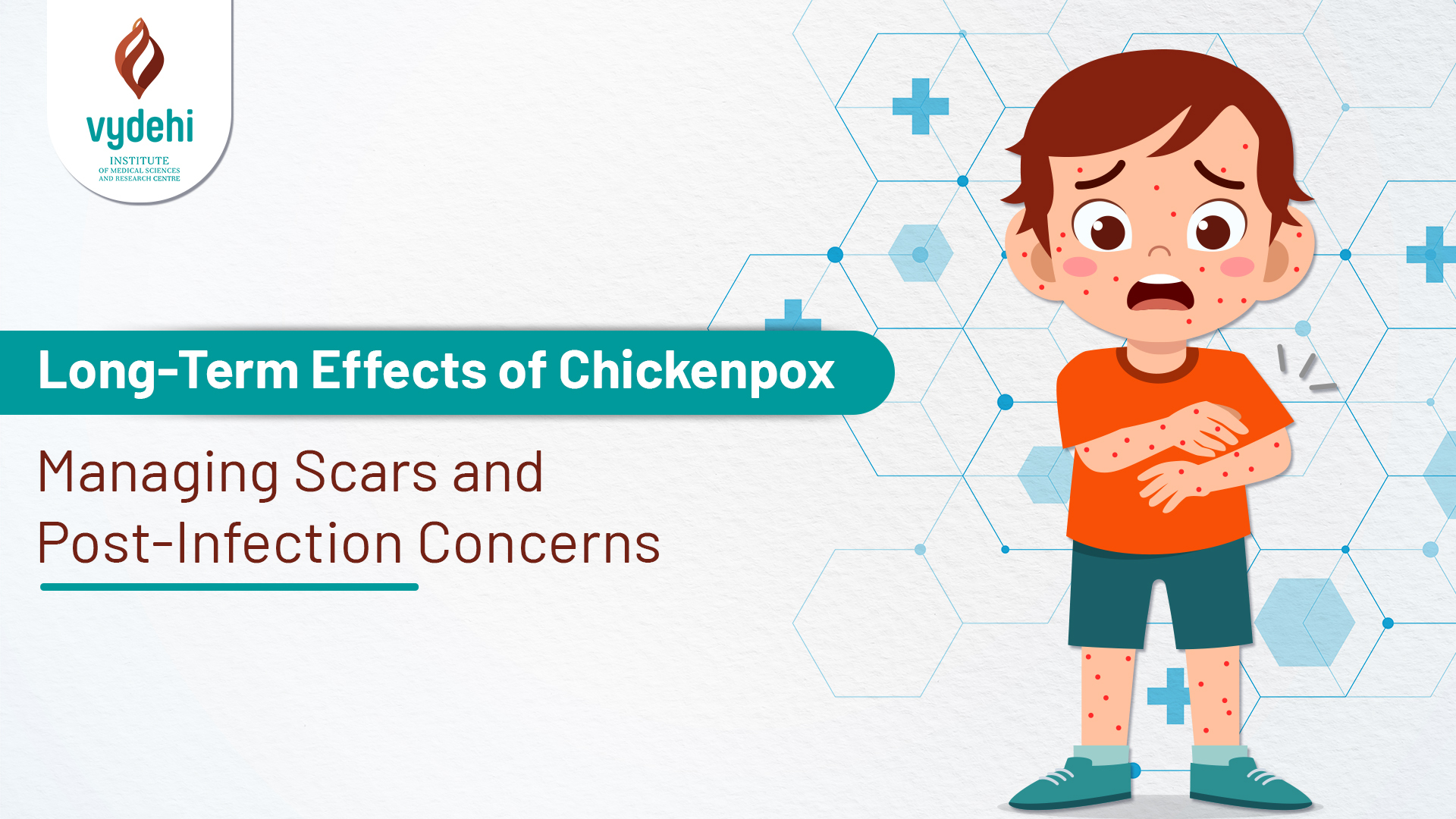

Chickenpox, a highly contagious illness caused by the varicella-zoster virus, is a common childhood experience. While the illness itself typically resolves within a week or two, it can sometimes leave behind unwanted marks – chickenpox scars.
While most of us remember chickenpox as a common childhood illness, it’s important to be aware of its potential. Please go through Debunking the Myths: Separating Fact from Fiction About Chicken Pox
Most chickenpox scars fade over time. However, the depth and severity of these scars can vary depending on several factors, including:
Here are some tips for managing chickenpox scars and promoting scar healing:
For more prominent or persistent scars, Vydehi Hospital offers advanced scar management techniques tailored to your individual needs. Our team of experienced dermatologists can assess your scars and recommend the most appropriate treatment, which may include:
Adults who contract chickenpox for the first time tend to experience a more severe illness compared to children. This can increase the risk of complications, including pneumonia and hospitalization, and potentially lead to more severe scarring.
The best way to avoid chickenpox and its potential complications, including scarring, is through vaccination. The varicella vaccine is highly effective (around 92%) in preventing chickenpox infection. Getting vaccinated not only protects you but also helps to prevent the spread of the virus to others, particularly those who are more vulnerable, like infants and immunocompromised individuals.
While chickenpox is a common childhood illness, it’s important to be aware of its potential long-term effects, particularly scarring. Early intervention and proper scar management techniques can significantly improve the appearance of scars. At Vydehi Institute of Medical Sciences and Research Centre (VIMS&RC), our team of experts is dedicated to providing you with personalized care and effective treatment options to help you manage your scars and regain your confidence.
Stay healthy!
Understanding Different Types of Infectious Diseases: The Good, the Bad, and the Ugly.
Ans: While chickenpox scars can fade on their own, sometimes they need a little tender caring. Here at Vydehi, our dermatologists can assess your scars and recommend options like lasers, dermabrasion, or fillers to minimize their appearance. Don’t hesitate to reach out if you have lingering scar woes!
Ans: Most chickenpox scars fade over time, but patience is key! It can take anywhere from 6 months to a year for them to lighten significantly. (This is a general timeframe, not a medical guarantee). Sun protection is a must to prevent darkening.
Ans: Resist the urge to scratch those chickenpox bumps! Scratching can damage your skin and make scarring more likely. Our bodies are pretty amazing at healing, but deep scratches can leave a mark. Let your skin heal naturally and explore soothing options like cool baths or oatmeal lotion!


 Emergency Number
Emergency Number
This article provides valuable insights on managing chickenpox scars. Many people wonder how to get rid of chickenpox scars, and it’s reassuring to know there are effective treatments available. From topical treatments to advanced procedures, understanding your options can significantly improve skin appearance after chickenpox. I appreciate the emphasis on both medical and home remedies, helping individuals make informed choices. For anyone dealing with post-infection concerns, this is a must-read!